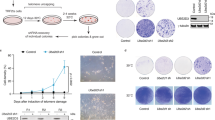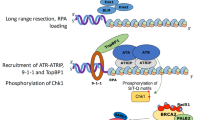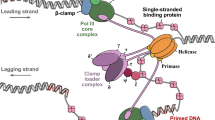Abstract
Reaction of (ADP-ribosyl)ation catalyzed by DNA-dependent proteins of the poly(ADP-ribose)polymerase (PARP) family, PARP1, PARP2, and PARP3, comprises the cellular response to DNA damage. These proteins are involved in the base excision repair (BER) process. Despite the extensive research, it remains unknown how PARPs are involved in the regulation of the BER process and how the roles are distributed between the DNA-dependent members of the PARP family. Here, we investigated the interaction of the PARP’s family DNA-dependent proteins with nucleosome core particles containing DNA intermediates of the initial stages of BER. To do that, the nucleosomes containing damage in the vicinity of one of the DNA duplex blunt ends were reconstituted based on the Widom’s Clone 603 DNA sequence. Dissociation constants of the PARP complexes with nucleosomes bearing DNA contained uracil (Native), apurine/apyrimidine site (AP site), or a single-nucleotide gap with 5′-dRp fragment (Gap) were determined. It was shown that the affinity of the proteins for the nucleosomes increased in the row: PARP3<<PARP2<PARP1; whereas the affinity of each protein for the certain damage type increased in the row: Native = AP site < Gap for PARP1 and PARP2, Gap<<<Native = AP site for PARP3. The interaction regions of each PARP protein with nucleosome were also determined by sodium borohydride cross-linking and footprinting assay. Based on the obtained and published data, the involvement pattern of the PARP1, PARP2, and PARP3 into the interaction with nucleosome particles containing DNA intermediates of the BER process was discussed.






Similar content being viewed by others
Abbreviations
- AP site:
-
apurine/apyrimidine site
- AP cluster:
-
cluster of AP sites
- APE1:
-
apurinic/apyrimidinic endonuclease 1
- BER:
-
base excision repair
- DNase I:
-
deoxyribonuclease I
- Gap:
-
DNA duplex containing 5′-dRp-fragment
- NCP:
-
nucleosome or nucleosome core particle
- PARP:
-
poly(ADP-ribose)polymerase
- PARylation:
-
poly(ADP-ribosyl)ation
- UDG:
-
uracil-DNA glycosylase
References
Lindahl, T. (1993) Instability and decay of the primary structure of DNA, Nature, 362, 709-715, https://doi.org/10.1038/362709a0.
Wilson, D. M., and Barsky, D. (2001) The major human abasic endonuclease: formation, consequences and repair of abasic lesions in DNA, Mutat. Res., 485, 283-307, https://doi.org/10.1016/s0921-8777(01)00063-5.
Schärer, O. D. (2003) Chemistry and biology of DNA repair, Angew. Chem. Int. Ed. Engl., 42, 2946-2974, https://doi.org/10.1002/anie.200200523.
Kim, Y.-J., and Wilson, D. M. (2012) Overview of base excision repair biochemistry, Curr. Mol. Pharmacol., 5, 3-13, https://doi.org/10.2174/1874467211205010003.
Shall, S. S., and de Murcia, G. (2000) Poly(ADP-ribose) polymerase-1: What have we learned from the deficient mouse model? Mutat. Res., 460, 1-15, https://doi.org/10.1016/s0921-8777(00)00016-1.
Khodyreva, S. N., and Lavrik, O. I. (2016) Poly(ADP-Ribose) polymerase 1 as a key regulator of DNA repair, Mol. Biol. (Mosk), 50, 580-595, https://doi.org/10.7868/S0026898416040030.
Amé, J. C., Rolli, V., Schreiber, V., Niedergang, C., Apiou, F., et al. (1999) PARP-2, a novel mammalian DNA damage-dependent poly(ADP-ribose) polymerase, J. Biol. Chem., 274, 17860-17868, https://doi.org/10.1074/jbc.274.25.17860.
Rouleau, M., McDonald, D., Gagné, P., Ouellet, M. E., Droit, A., et al. (2007) PARP-3 associates with polycomb group bodies and with components of the DNA damage repair machinery, J. Cell. Biochem., 100, 385-401, https://doi.org/10.1002/jcb.21051.
Beck, C., Robert, I., Reina-San-Martin, B., Schreiber, V., and Dantzer, F. (2014) Poly(ADP-ribose) polymerases in double-strand break repair: focus on PARP1, PARP2 and PARP3, Exp. Cell Res., 329, 18-25, https://doi.org/10.1016/j.yexcr.2014.07.003.
Isabelle, M., Moreel, X., Gagné, J. P., Rouleau, M., Ethier, C., et al. (2010) Investigation of PARP-1, PARP-2, and PARG interactomes by affinity-purification mass spectrometry, Proteome Sci., 8, 22-32, https://doi.org/10.1186/1477-5956-8-22.
Grundy, G. J., Polo, L. M., Zeng, Z., Rulten, S. L., Hoch, N. C., et al. (2016) PARP3 is a sensor of nicked nucleosomes and monoribosylates histone H2B(Glu2), Nat. Commun., 7, 12404-12415, https://doi.org/10.1038/ncomms12404.
Van Beek, L., McClay, E., Patel, S., Schimpl, M., Spagnolo, L., et al. (2021) A PARP power: Structural perspective on PARP1, PARP2, and PARP3 in DNA damage repair and nucleosome remodelling, Int. J. Mol. Sci., 22, 5112, https://doi.org/10.3390/ijms22105112.
Huang, X., LeDuc, R. D., Fornelli, L., Schunter, A. J., Bennett, R. L., et al. (2019) Defining the NSD2 interactome: PARP1 PARylation reduces NSD2 histone methyltransferase activity and impedes chromatin binding, J. Biol. Chem., 294, 12459-12471, https://doi.org/10.1074/jbc.RA118.006159.
Boehler, C., Gauthier, L. R., Mortusewicz, O., Biard, D. S., Saliou, J.-M., et al. (2011) Poly(ADP-ribose) polymerase 3 (PARP3), a newcomer in cellular response to DNA damage and mitotic progression, Proc. Natl. Acad. Sci. USA, 108, 2783-2788, https://doi.org/10.1073/pnas.1016574108.
Cistulli, C., Lavrik, O. I., Prasad, R., Hou, E., and Wilson, S. H. (2004) AP endonuclease and poly(ADP-ribose) polymerase-1 interact with the same base excision repair intermediate, DNA Repair (Amst), 3, 581-591, https://doi.org/10.1016/j.dnarep.2003.09.012.
Khodyreva, S. N., Prasad, R., Ilina, E. S., Sukhanova, M. V., Kutuzov, M. M., et al. (2010) Apurinic/apyrimidinic (AP) site recognition by the 5′-dRP/AP lyase in poly(ADP-ribose) polymerase-1 (PARP-1), Proc. Natl. Acad. Sci. USA, 107, 22090-22095, https://doi.org/10.1073/pnas.1009182107.
Sukhanova, M., Khodyreva, S., and Lavrik, O. (2010) Poly(ADP-ribose) polymerase 1 regulates activity of DNA polymerase β in long patch base excision repair, Mutat. Res., 685, 80-89, https://doi.org/10.1016/j.mrfmmm.2009.08.009.
Lavrik, O. I., Prasad, R., Sobol, R. W., Horton, J. K., Ackerman, E. J., et al. (2001) Photoaffinity labeling of mouse fibroblast enzymes by a base excision repair intermediate. Evidence for the role of poly(ADP-ribose) polymerase-1 in DNA repair, J. Biol. Chem., 276, 25541-25548, https://doi.org/10.1074/jbc.M102125200.
Hanzlikova, H., Kalasova, I., Demin, A. A., Pennicott, L. E., Cihlarova, Z., et al. (2018) The importance of poly(ADP-ribose) polymerase as a sensor of unligated Okazaki fragments during DNA replication, Mol. Cell, 71, 319-331, https://doi.org/10.1016/j.molcel.2018.06.004.
Hakmé, A., Wong, H. K., Dantzer, F., and Schreiber, V. (2008) The expanding field of poly(ADP-ribosyl)ation reactions. “Protein Modifications: Beyond the Usual Suspects” Review Series, EMBO Rep., 9, 1094-1100, https://doi.org/10.1038/embor.2008.191.
Sukhanova, M. V., Abrakhi, S., Joshi, V., Pastre, D., Kutuzov, M. M., et al. (2016) Single molecule detection of PARP1 and PARP2 interaction with DNA strand breaks and their poly(ADP-ribosyl)ation using high-resolution AFM imaging, Nucleic Acids Res., 44, 1-12, https://doi.org/10.1093/nar/gkv1476.
Sukhanova, M. V., Hamon, L., Kutuzov, M. M., Joshi, V., Dobra, I., et al. (2019) A single-molecule atomic force microscopy study of PARP1 and PARP2 recognition of base excision repair DNA intermediates, J. Mol. Biol., 431, 2655-2673, https://doi.org/10.1016/j.jmb.2019.05.028.
Kutuzov, M. M., Khodyreva, S. N., Amé, J.-C., Ilina, E. S., Sukhanova, M. V., et al. (2013) Interaction of PARP-2 with DNA structures mimicking DNA repair intermediates and consequences on activity of base excision repair proteins, Biochimie, 95, 1208-1215, https://doi.org/10.1016/j.biochi.2013.01.007.
Langelier, M. F., Riccio, A. A., and Pascal, J. M. (2014) PARP-2 and PARP-3 are selectively activated by 5′ phosphorylated DNA breaks through an allosteric regulatory mechanism shared with PARP-1, Nucleic Acids Res., 42, 7762-7775, https://doi.org/10.1093/nar/gku474.
Yélamos, J., Schreiber, V., and Dantzer, F. (2008) Toward specific functions of poly(ADP-ribose)polymerase-2, Trends Mol. Med., 14, 169-178, https://doi.org/10.1016/j.molmed.2008.02.003.
Kutuzov, M. M., Khodyreva, S. N., Schreiber, V., and Lavrik, O. I. (2014) The role of PARP2 in DNA repair, Mol. Biol. (Mosk), 48, 561-572, https://doi.org/10.1134/S0026893314040062.
Talhaoui, I., Lebedeva, N. A., Zarkovic, G., Saint-Pierre, C., Kutuzov, M. M., et al. (2016) Poly(ADP-ribose) polymerases covalently modify strand break termini in DNA fragments in vitro, Nucleic Acids Res., 44, 9279-9295, https://doi.org/10.1093/nar/gkw67523.
Belousova, E. A., Ishchenko, A. A., and Lavrik, O. I. (2018) DNA is a new target of Parp3, Sci. Rep., 8, 4176-4187, https://doi.org/10.1038/s41598-018-22673-3.
Zarkovic, G., Belousova, E. A., Talhaoui, I., Saint-Pierre, C., Kutuzov, M. M., et al. (2018) Characterization of DNA ADP-ribosyltransferase activities of PARP2 and PARP3: New insights into DNA ADP-ribosylation, Nucleic Acids Res., 46, 2417-2431, https://doi.org/10.1093/nar/gkx1318.
McGinty, R. K., and Tan, S. (2015) Nucleosome structure and function, Chem. Rev., 115, 2255-2273, https://doi.org/10.1021/cr500373h.
Kutuzov, M. M., Kurgina, T. A., Belousova, E. A., Khodyreva, S. N., and Lavrik, O. I. (2019) Optimization of nucleosome assembly from histones and model DNAs and estimation of the reconstitution efficiency, Biopolym. Cell, 35, 91-98, https://doi.org/10.7124/bc.00099A.
Beard, B. C., Wilson, S. H., and Smerdon, M. J. (2003) Suppressed catalytic activity of base excision repair enzymes on rotationally positioned uracil in nucleosomes, Proc. Natl. Acad. Sci. USA, 100, 7465-7470, https://doi.org/10.1073/pnas.1330328100.
Cole, H. A., Tabor-Godwin, J. M., and Hayes, J. J. (2010) Uracil DNA glycosylase activity on nucleosomal DNA depends on rotational orientation of targets, J. Biol. Chem., 285, 2876-2885, https://doi.org/10.1074/jbc.M109.073544.
Hinz, J. M. (2014) Impact of abasic site orientation within nucleosomes on human APE1 endonuclease activity, Mutat. Res., 766, 19-24, https://doi.org/10.1016/j.mrfmmm.2014.05.008.
Clark, N. J., Kramer, M., Muthurajan, U. M., and Luger, K. (2012) Alternative modes of binding of poly(ADP-ribose) polymerase 1 to free DNA and nucleosomes, J. Biol. Chem., 287, 32430-32439, https://doi.org/10.1074/jbc.M112.397067.
D’Amours, D., Desnoyers, S., D’Silva, I., and Poirier, G. G. (1999) Poly(ADP-ribosyl)ation reactions in the regulation of nuclear functions, Biochem. J., 342, 249-268.
Messner, S., Altmeyer, M., Zhao, H., Pozivil, A., Roschitzki, B., et al. (2010) PARP1 ADP-ribosylates lysine residues of the core histone tails, Nucleic Acids Res., 38, 6350-6362, https://doi.org/10.1093/nar/gkq463.
Kutuzov, M. M., Belousova, E. A., Kurgina, T. A., Ukraintsev, A. A., Vasil’eva, I. A., et al. (2021) The contribution of PARP1, PARP2 and poly(ADP-ribosyl)ation to base excision repair in the nucleosomal context, Sci. Rep., 11, 4849-4865, https://doi.org/10.1038/s41598-021-84351-1.
Amé, J.-C., Kalisch, T., Dantzer, F., and Schreiber, V. (2011) Purification of recombinant poly(ADP-ribose) polymerases, Methods Mol. Biol., 780, 135-152, https://doi.org/10.1007/978-1-61779-270-0_9.
Laemmli, U. K. (1970) Cleavage of structural proteins during the assembly of the head of bacteriophage T4, Nature, 227, 680-685, https://doi.org/10.1038/227680a0.
Dey, B., Thukral, S., Krishnan, S., Chakrobarty, M., Gupta, S., et al. (2012) DNA–protein interactions: Methods for detection and analysis, Mol. Cell. Biochem., 365, 279-299, https://doi.org/10.1007/s11010-012-1269-z.
Zhou, C., Sczepanski, J. T., and Greenberg, M. M. (2012) Mechanistic studies on histone catalyzed cleavage of apyrimidinic/apurinic sites in nucleosome core particles, J. Am. Chem. Soc., 134, 16734-16741, https://doi.org/10.1021/ja306858m.
Sczepanski, J. T., Zhou, C., and Greenberg, M. M. (2013) Nucleosome core particle – catalyzed strand scission at abasic sites, Biochemistry, 52, 2157-2164, https://doi.org/10.1021/bi3010076.
Yang, K., and Greenberg, M. M. (2018) Enhanced cleavage at abasic sites within clustered lesions in nucleosome core particles, Chembiochem, 19, 2061-2065, https://doi.org/10.1002/cbic.201800338.
Kutuzov, M. M., Khodyreva, S. N., Ilina, E. S., Sukhanova, M. V., Amé, J.-C., et al. (2015) Interaction of PARP-2 with AP site containing DNA, Biochimie, 112, 10-19, https://doi.org/10.1016/j.biochi.2015.02.010.
Wiederhold, L., Leppard, J. B., Kedar, P., Karimi-Busheri, F., Rasouli-Nia, A., et al. (2004) AP endonuclease-independent DNA base excision repair in human cells, Mol. Cell, 15, 209-220, https://doi.org/10.1016/j.molcel.2004.06.003.
Khodyreva, S. N., and Lavrik, O. I. (2020) Non-canonical interaction of DNA repair proteins with intact and cleaved AP sites, DNA Repair (Amst), 90, 102847-102861, https://doi.org/10.1016/j.dnarep.2020.102847.
Fromme, J. C., and Verdine, G. L. (2004) Base excision repair, Adv. Protein Chem., 69, 1-41, https://doi.org/10.1016/S0065-3233(04)69001-2.
Krokeide, S. Z., Bolstad, N., Laerdahl, J. K., Bjørås, M., and Luna, L. (2009) Expression and purification of NEIL3, a human DNA glycosylase homolog, Protein Expr. Purif., 65, 160-164, https://doi.org/10.1016/j.pep.2008.11.014.
Piersen, C. E., McCullough, A. K., and Lloyd, R. S. (2000) AP lyases and dRPases: Commonality of mechanism, Mutat. Res., 459, 43-53, https://doi.org/10.1016/s0921-8777(99)00054-3.
Khodyreva, S. N., and Lavrik, O. I. (2011) Affinity modification in a proteomic study of DNA repair ensembles, Bioorg. Khim., 37, 91-107, https://doi.org/10.1134/s1068162011010109.
Galas, D. J., and Schmitz, A. (1978) DNAse footprinting: a simple method for the detection of protein-DNA binding specificity, Nucleic Acids Res., 5, 3157-3170, https://doi.org/10.1093/nar/5.9.3157.
Maluchenko, N. V., Nilov, D. K., Pushkarev, S. V., Kotova, E. Y., Gerasimova, N. S., et al. (2021) Mechanisms of nucleosome reorganization by PARP1, Int. J. Mol. Sci., 22, 12127, https://doi.org/10.3390/ijms222212127.
Gaullier, G., Roberts, G., Muthurajan, U. M., Bowerman, S., Rudolph, J., et al. (2020) Bridging of nucleosome-proximal DNA double-strand breaks by PARP2 enhances its interaction with HPF1, PLoS One, 15, e0240932, https://doi.org/10.1371/journal.pone.0240932.
Funding
This work was financially supported by the Russian Foundation for Basic Research (grant no. 20-04-00674) and Russian Government funded budget project of ICBFM SB RAS no. 121031300041-4.
Author information
Authors and Affiliations
Corresponding author
Ethics declarations
The authors declare no conflicts of interest in financial or any other sphere. This article does not contain any studies with human participants or animals performed by any of the authors.
Rights and permissions
About this article
Cite this article
Ukraintsev, A.A., Belousova, E.A., Kutuzov, M.M. et al. Study of Interaction of the PARP Family DNA-Dependent Proteins with Nucleosomes Containing DNA Intermediates of the Initial Stages of BER Process. Biochemistry Moscow 87, 331–345 (2022). https://doi.org/10.1134/S0006297922040034
Received:
Revised:
Accepted:
Published:
Issue Date:
DOI: https://doi.org/10.1134/S0006297922040034




